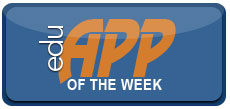I have had the privilege to be invited to many campuses to speak about strategies for incorporating a collegial-mindset within the university. A campus culture that values collegiality and civility is among the most important contributions a university can make. Academic departments recognize the desirability of a collegial environment for faculty members, students, and professional employees and that such an environment should be maintained and strengthened throughout the university. In an environment enhanced by trust, respect, and transparency faculty members can be revivified so that they can play an active and responsible role in academic matters. A collegial relationship is most effective when peers work together to carry out their duties and responsibilities in a professional manner.
Read more ›CURRENT ARTICLE • August 15
OTHER RECENT ARTICLES
School Daze: Eye-Tracking Study Reveals What Earns Students' Attention in Classroom
A new study contradicts the widely accepted belief that classroom attention peaks during the first 15 minutes of class and then generally tapers off. Instead, David Rosengrant, an associate professor of physics education at Kennesaw State University, discovered that classroom attention is not as linear as previously thought and is actually impacted by various factors throughout the duration of the lecture.
Read More ›I was looking for a quote I wanted to include in a presentation when I happened on another one that reminded me of an aspect of learning we don’t think about as regularly as we should.
Read More ›Understanding what motivates online learners is important because motivated students are more likely to engage in activities that help them learn and achieve, says Brett Jones, associate professor of educational psychology at Virginia Tech. Based on an extensive review of the literature on student motivation, Jones has developed the MUSIC model of student motivation, which identifies five main factors that contribute to student motivation: eMpowerment, Usefulness, Success, Interest, and Caring.
Read More ›Faculty often recommend study groups to students, especially in large courses or in courses where students typically struggle with the material. “You’ll do better on exams in this course if you work together with some other students.” Beyond these verbal recommendations or some description of the benefits of study groups in the syllabus, most faculty leave the formation and activities of study groups entirely up to students.
Read More ›In May I finished a second edition of my Learner-Centered Teaching book. Revising it gave me the chance to revisit my thinking about the topic and look at work done since publication of the first edition ten years ago. It is a subject about which there is still considerable interest. The learner-centered label now gets attached to teaching strategies, teachers, classes, programs, departments and institutions. Like many trendy descriptors in higher education, with widespread use comes a certain definitional looseness. Active learning, student engagement and other strategies that involve students and mention learning are called learner-centered. And although learner-centered teaching and efforts to involve students have a kind of bread and butter relationship, they are not the same thing. In the interest of more definitional precision, I’d like to propose five characteristics of teaching that make it learner-centered.
Read More › Fieldwork refers to any component of the curriculum that involves leaving the classroom and learning through firsthand experience. Most instructors incorporate fieldwork to help students understand theory, develop skills, integrate knowledge, build tacit knowledge, develop meaning in places, and work with peers and instructors in alternate settings.
Fieldwork refers to any component of the curriculum that involves leaving the classroom and learning through firsthand experience. Most instructors incorporate fieldwork to help students understand theory, develop skills, integrate knowledge, build tacit knowledge, develop meaning in places, and work with peers and instructors in alternate settings.
Understanding learner needs is essential for providing quality education. One approach for accomplishing this is through the use of student evaluations. A common argument against the use of student evaluations is that students do not know their own needs. However, many studies have shown student feedback/suggestions to be reliable and valid. If we do not even attempt to understand their needs, we may fail to recognize the support they require to be successful.
Read More ›
|
I have been looking for a reliable iPad app that would allow me to remotely connect and control my PC or Mac and I finally found one that works well! The app is Whiteboard by Splashtop and the wireless connection between iPad and PC/Mac is seamless and dependable. Connection is a HUGE issue when working with wireless technologies because the last thing that any presenter wants is to spend time figuring out technical glitches. Configuring Whiteboard requires that both iPad and Mac/PC are connected to the same WiFi, which admittedly can be a problem on most campuses for security or other reasons. My simple work around is to use an ad hoc network (an Airport Express will do just fine) if all I want to do is have wireless control of my PC or Mac from the iPad. Another option is to use a MiFi assuming you have one.
Podium presenters may not have much of an interest in Whiteboard, but if you like the freedom to move around the classroom, being able to solicit or encourage direct audience participation with what is being projected, then you will find that there is much to like about Whiteboard. My first experience with wireless control of the PC/Mac was with Splashtop’s Remote Desktop ($4.99) but I was soon sold on Whiteboard because it allows both control of my computer and the use of a virtual whiteboard thus making the app a two for one value! Using Splashtop’s Whiteboard, unlike one of its competitor’s, does not require that you perform any sort of technological gymnastics to connect iPad and computer; Whiteboard just does it and nothing could be simpler!
The cost of Whiteboard is rather high ($19.99), however, when you consider that the plug-in for all computers—Mac or PC—is free and you get rock solid reliable operation then what’s not to like about the whole package? I also like being able to use my iPad on two computer systems, PC or Mac. However, one of the things that I would really like is mirroring capability so that I can project what is on my iPad. It would also be nice if users could have a presentation mode with the ability to blank out the projected screen but still have the option of seeing content on their iPad. This would be a really neat way of allowing presenters to go paperless with their presentation notes on the iPad and then be able to switch to presentation mode as needed, something I am able to do with Apple’s Keynote app.
Here are some ways to use the Remote Desktop app.
- Launch previously labeled graphical files on Mac or PC for examination and discussion.
- Launch a brain storming or concept mapping application; give a student your Bluetooth iPad keyboard and have them enter text into maps as a way to order ideas being generated.
- Launch the virtual whiteboard (touch the pen icon in Splashtop’s Whiteboard) to create a diagram, solve a problem, or label an illustration. There is a bit of a delay here so you will need to take this into consideration.
- Want to divert attention away from a PowerPoint slide in order to facilitate some conversation? Click on the virtual keyboard while in Splashtop’s Whiteboard touch the letter “B” to make the screen go black or blank. To resume your presentation, simply touch any area of the screen to un-blank and reveal your projected slide.
Okay, you get the idea. Now it’s your turn to experiment.
The Competition
There are a few different products available to help you connect to your PC remotely. One is GoToMyPC, but who wants to pay $9.95 a month or $119.40 a year? Desktop Connect ($14.99) appears to be a viable option but like Air Display ($9.99), I really do not want to fuss with connection issues and IP address. Other issues for connecting iPad to PC or Mac appear to be related to Remote Desktop Protocol (RDP) and Virtual Network Computing (VNC) which few iPad users understand and want to fuss with. I recently heard about iTeleport ($24.99) but I am not sure I want to spend that much just to ‘try’ something unless it is significantly better. For now, I think I will stay with Splashtop’s Remote Desktop or their Whiteboard version.
Dave Yearwood is an associate professor and chair of the technology department at University of North Dakota.
I’d like to report on a nonscientific study I have been conducting, without human-subjects approval or even a clear research plan. This won’t make it into the research journals, but the results are still compelling.
Read More ›





